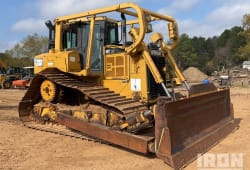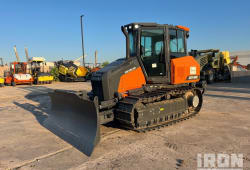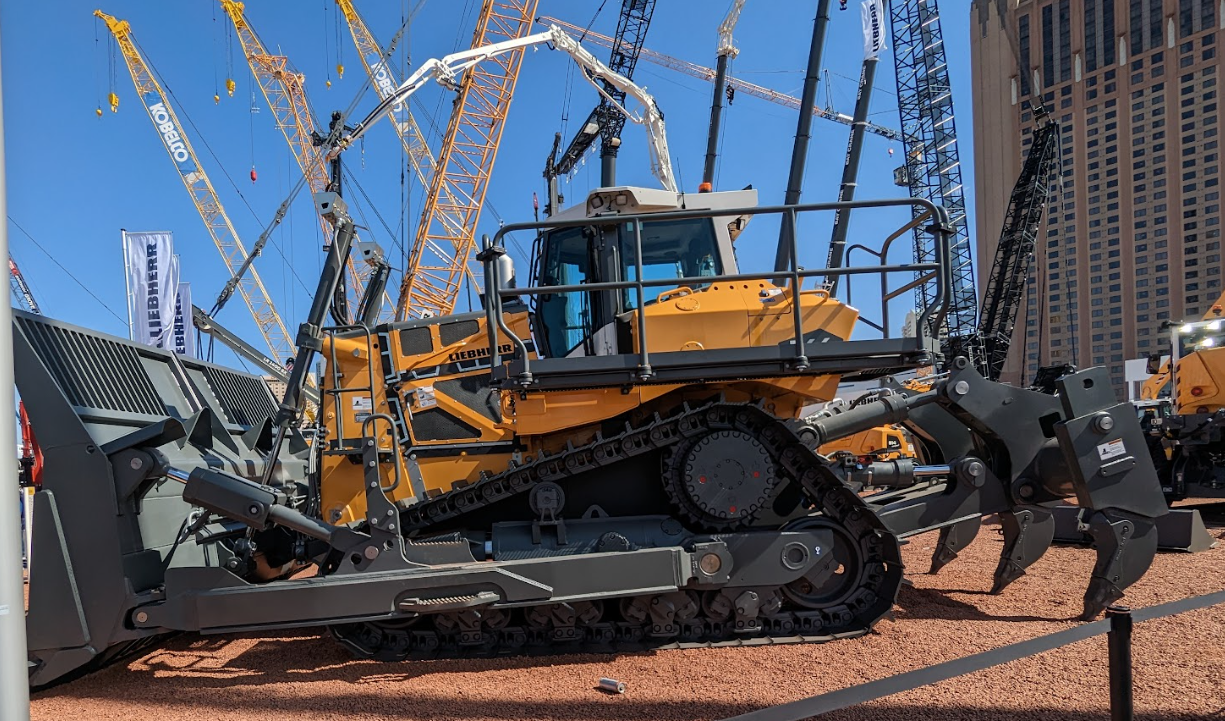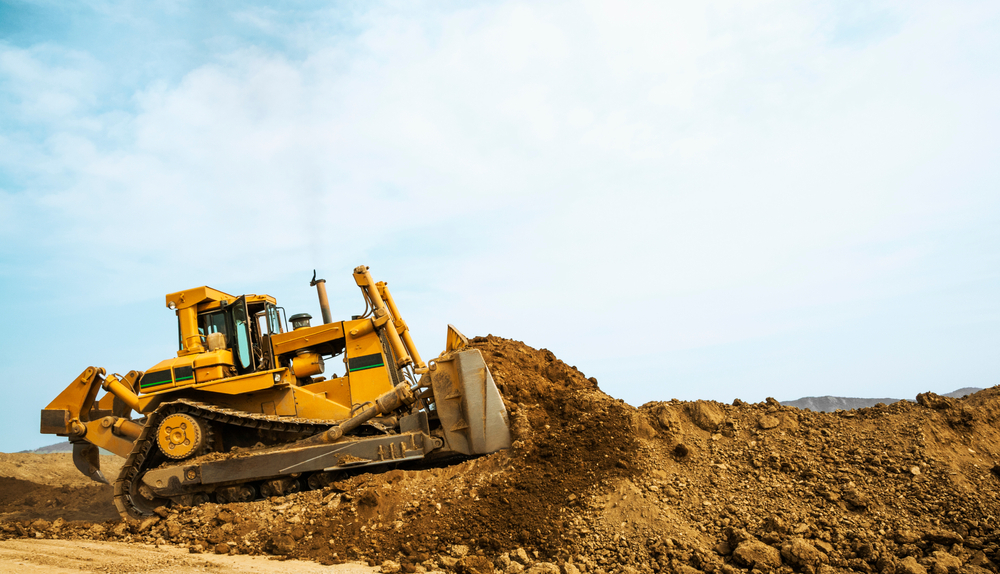The Bulldozer Machine That Will Help You Move Earth
10 Min read
)
September 2, 2023
Meet the bulldozer that's about to revolutionize the way you tackle earth-moving tasks. It's a powerhouse on wheels, a mechanical marvel, and it's here to make your life easier. This heavy-duty beast isn't just another piece of construction equipment; it's your ultimate ally in reshaping the land.
In this article, we'll introduce you to the world of bulldozers, unveiling the incredible capabilities that lie beneath those rugged exteriors. We'll cover the basics, from how these machines work to the different types available, ensuring you're armed with all the knowledge you need.
But that's not all. We'll also delve into the various applications where bulldozers shine, from construction sites to agriculture and beyond. Plus, we'll share tips on choosing the right bulldozer for your job site and your specific needs, maintenance hacks to keep it running smoothly, and even some surprising fun facts about these mechanical marvels. So, if you're ready to learn how a bulldozer can be your earth-moving ally, read on!
The Basics of Bulldozers
Bulldozers are powerful construction machines designed to move large quantities of earth, debris, and other heavy materials around. These robust machines play a pivotal role in various industries, thanks to their impressive capabilities.
What Are Bulldozers and How Do They Operate?
:format(webp)) Bulldozers, often referred to as "dozers," are heavy-duty vehicles characterized by a large, flat blade at the front. They are equipped with a powerful engine and tracks or wheels, which enable them to navigate rough terrains with ease. The primary function of a bulldozer is to push, lift, and move materials, making them indispensable in construction, mining, and agriculture.
Bulldozers, often referred to as "dozers," are heavy-duty vehicles characterized by a large, flat blade at the front. They are equipped with a powerful engine and tracks or wheels, which enable them to navigate rough terrains with ease. The primary function of a bulldozer is to push, lift, and move materials, making them indispensable in construction, mining, and agriculture.
To operate the blade of a mini bulldozer, a skilled operator uses the machine's controls to manipulate the angle blades the blade, and tracks or wheels. By adjusting the blade's angle and depth, they can push, scoop, and level different types of terrain efficiently.
Key Components and Features of Bulldozers
Understanding the essential components of bulldozers is crucial for anyone looking to harness their earth-moving potential. Here are some key components and features to know:
Bulldozer blades
The blade is a heavy metal plate with a front attachment that comes in various shapes, including straight, curved shape U-shaped, and semi-U-shaped. It is the primary tool used for moving materials. The blade is the heavy metal plate located at the front of the bulldozer that is used to push and dig through materials.
Tracks or Wheels: Bulldozers can have either tracks or wheels, depending on the model. Tracks offer superior traction and stability on challenging terrains, while wheels provide better speed and manoeuvrability.
Engine: Bulldozers are equipped with powerful engines that provide the necessary horsepower to tackle heavy-duty tasks.
Ripper: Some bulldozers come with a ripper attachment at the rear, which is used for breaking up hard or compacted surfaces.
Cab: The operator's cab is where the operator controls the mini bulldozer's final drive. It's equipped with ergonomic seats, controls, and visibility aids for comfortable and safe operation.
Read more about Bulldozer.......
Applications of Bulldozers
Bulldozers find applications in a wide range of industries and projects due to their versatility and power.
Versatility Across Industries
Bulldozers are employed in various industries, including:
- Construction: In construction projects, bulldozers level the ground, clear debris, and create pathways for other construction equipment.
- Mining: Bulldozers play a crucial role in mining operations by removing overburden and shaping mine sites.
- Agriculture: Farmers use bulldozers for land preparation, clearing fields, and creating irrigation channels.
- Forestry: Bulldozers assist in forest management by clearing land for logging and firebreaks.
Choosing the Right Bulldozer
When it comes to selecting the right bulldozer for your project, several factors come into play. Here's what you need to consider:
Bulldozer Types
First and foremost, you need to understand the different types of bulldozers available. some types have completely articulated hydraulic steering with blade-combined features and hydraulic tilt cylinders. That's why it can drive even on dense and irregular terrain. The two primary categories are:
1. Crawler Bulldozers: A crawler bulldozer is equipped with continuous tracks, making them ideal for rough terrain and heavy-duty tasks.
2. Wheel Bulldozers: These mini bulldozers now have wheels, offering better mobility and manoeuvrability on smoother surfaces.
Size Matters
The size of the bulldozer you choose depends on the scale of your project. Bulldozers are categorized by their weight class, and common classes of wheel large bulldozers include:
1. Small Bulldozers: Suitable for light to heavy equipment and medium-duty tasks, such as landscaping and site preparation.
2. Medium Bulldozers: Versatile machines for various applications, including construction and agriculture.
3. Large Bulldozers: These heavyweights are designed for mining, major construction, and land clearing.
Power and Attachments
The power rating of a bulldozer's engine, measured in horsepower (HP), is a critical factor to consider. Horsepower represents the engine's ability to perform work, and in the context of bulldozers, it directly affects their efficiency in earthmoving tasks. Here's why it matters:
- Efficient Earthmoving: Higher horsepower translates to more engine power, allowing the bulldozer to move larger quantities of earth more swiftly. This is particularly crucial for projects involving heavy-duty tasks like digging, grading, or pushing substantial loads of material.
- Tackling Tough Terrain: In challenging terrains or when working with dense, compacted soils, a compact bulldozer along with ample horsepower can maintain consistent speed and power, ensuring the job gets done efficiently.
- Versatility: While more horsepower can be beneficial for demanding tasks, it's also important to strike a balance. Too much power in a tire bulldozer for a smaller project may lead to unnecessary fuel consumption and operational costs. Therefore, it's essential to match the bulldozer's horsepower with the specific requirements of your project.
Attachments Enhancing Versatility
Attachments are like the Swiss Army knives of bulldozers, expanding their capabilities and versatility. Here's why you should consider them:
- Blades: Bulldozer blades come in various types, such as straight blades, U-blades, angle blades, and S-blades. Each type serves different purposes. For instance, the straight blade of dozer blades is excellent for grading and levelling, while U-blades are designed for moving large volumes of material. Having the right blade attachment ensures you can adapt to different tasks on your project.
- Rippers: Rippers are toothed attachments that penetrate hard, compacted soil or soft surfaces on rocky, uneven terrain. They're essential for tasks like breaking up frozen ground or preparing the ground for construction. Having ripper attachments can save time and effort in challenging conditions.
- Winches: Winches can be invaluable for bulldozers working on soft ground in forestry or logging applications. They assist in pulling heavy logs or other materials over tough ground, increasing the dozer's utility in such environments.
Bulldozer Maintenance Tips
Once you've made the crucial decision of selecting the right bulldozer for your needs, the next step is to ensure its longevity and optimal performance through regular maintenance. Proper maintenance is vital because it not only extends the lifespan of your bulldozer but also ensures that it continues to operate efficiently throughout its service life. Here are some essential maintenance tips to follow:
Routine Inspections
Regular inspections are the cornerstone of bulldozer maintenance. The bulldozer must be operated with caution when moving over soft or sensitive ground, as it could damage the underlying soil or vegetation. Here's why they matter:
- Detecting Wear and Tear: By regularly inspecting your bulldozer, you can catch signs of wear and tear early. This includes identifying loose bolts, damaged hydraulic hoses, and worn-out tracks. Addressing these issues promptly can prevent more extensive damage down the line.
- Safety Assurance: Thorough inspections also contribute to safety on the worksite. Identifying and rectifying potential problems ensures that the bulldozer operates safely, protecting both the front-track bulldozer operator and those working in the vicinity.
Cleaning and Lubrication
Keeping your bulldozer clean and well-lubricated is essential for several reasons:
- Preventing Overheating: Bulldozers often work in dusty or muddy conditions, which can lead to the accumulation of dirt and debris in critical areas like the radiator and engine. Regular cleaning prevents overheating, ensuring the engine operates at the optimal temperature.
- Corrosion Prevention: Cleaning the undercarriage and other exposed parts of the bulldozer helps prevent corrosion. This is particularly crucial if the bulldozer operates in corrosive environments, such as near salt water.
- Lubrication for Smooth Operation: Proper lubrication of moving parts is essential to maintain smooth operation. Follow the manufacturer's recommendations for lubrication intervals and types of lubricants to use.
Servicing and Repairs
Scheduled servicing and prompt repairs are vital aspects of bulldozer maintenance:
- Manufacturer's Guidelines: Always adhere to the manufacturer's recommended servicing schedule. This includes tasks like changing oil, replacing filters, and attending to other consumables. Following these guidelines helps ensure that the bulldozer operates optimally.
- Qualified Technicians: When mechanical or electrical problems arise, it's crucial to hire qualified technicians for repairs. Attempting to fix complex issues without proper expertise can lead to further damage and downtime.
You May Read: How to Choose the Right Bulldozer Bucket: Types and Benefits
Conclusion
The bulldozer, with its various types like large, mini dozers, and medium dozers, equipped with hydraulic steering and versatile blade attachments, is a revolutionary force in earth-moving tasks. Its ability to navigate challenging terrains, whether hard or soft ground, using heavy metal plates and multiple gear teeth, makes it indispensable in construction, agriculture, and mining. Bulldozer blades, including the innovative U-blade, are pivotal for tasks like pushing and levelling.
This article has explored bulldozers from their operations to selection and maintenance, highlighting their role as an ultimate ally in reshaping the land, making them essential in tackling any earth-moving project.

Caleb Woods is an experienced content specialist and an editor at Boom & Bucket, blending his journalism background with expertise in the heavy equipment industry. He delivers engaging, informative content to help professionals stay informed and make smarter decisions in the machinery market.














